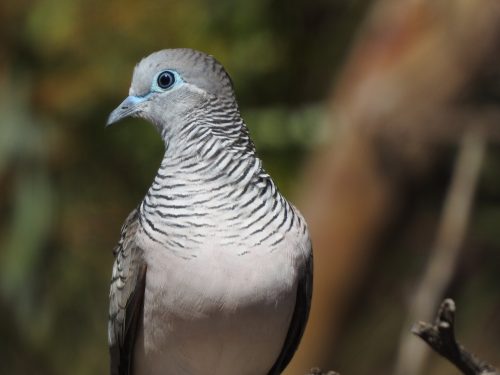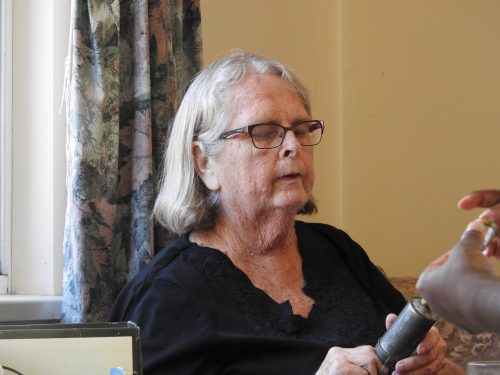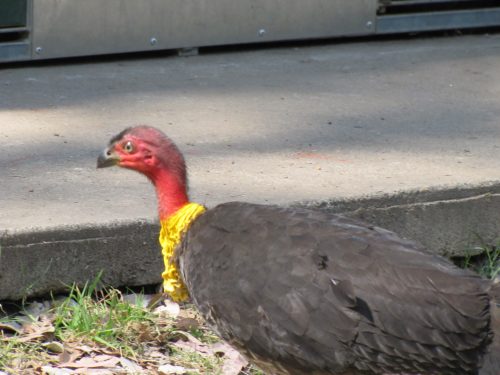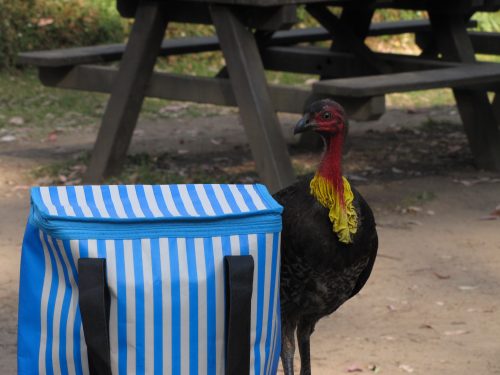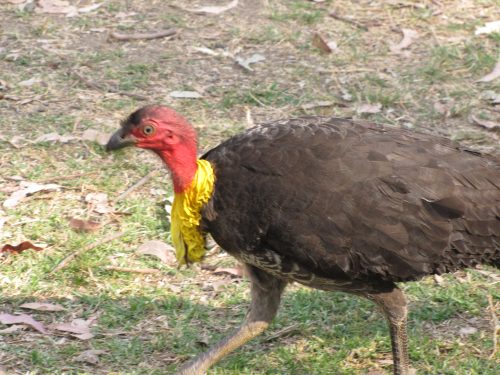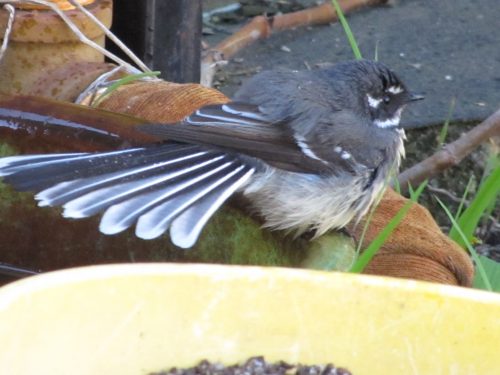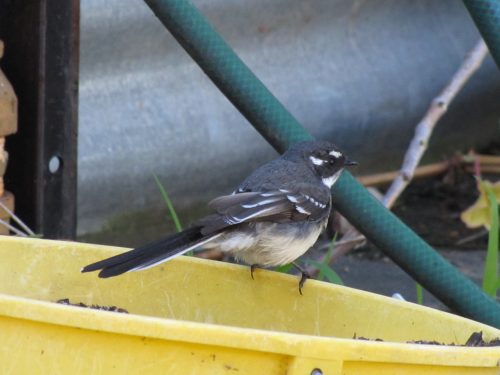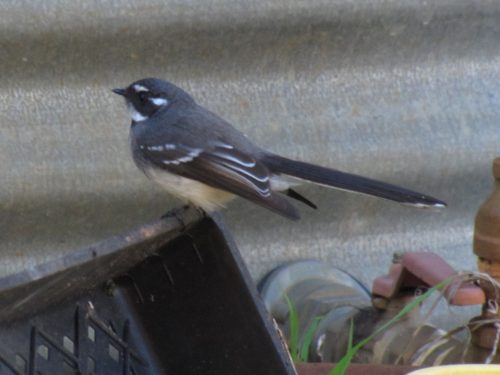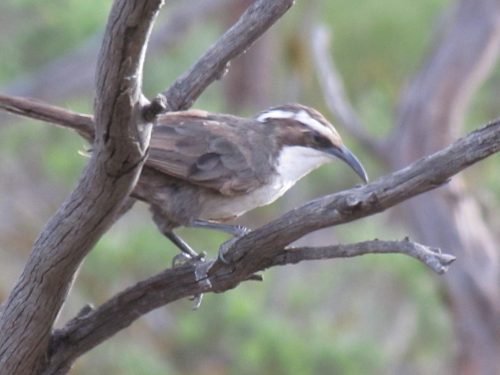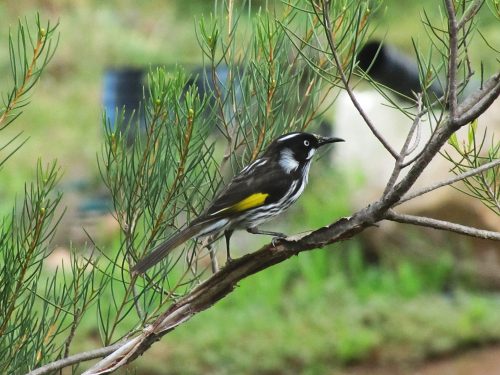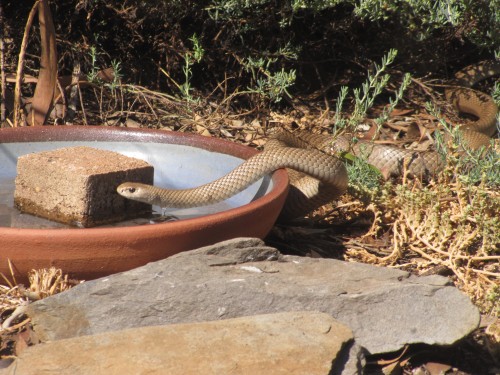Vale, Corinne Hampel
It has been far too long since my last entry here.
Sorry about that.
Sometimes life gets in the way. Writing articles here became a very low priority. I hope that you haven’t missed me too much.
Vale, Corinne
In the latter half of 2017, I became the full-time carer for my wife, Corinne. She had experienced many bouts of illness in her life from when we were first married – some 47 years ago. Her health deteriorated rapidly in the last few months of last year and we had many trips to the local medical centre as well as many drives to Adelaide – some 80 kilometres (about 1 hour) away for treatment.
We were pleased to be able to celebrate Christmas as a family; our daughter who is currently teaching in Ethiopia flew home, and our son and family drove over from Sydney (about 15 hours drive). It was delightful to have the grandchildren here for this special occasion.
In the middle of January and after the second round of radiotherapy, my wife went downhill very rapidly. After a short stay in the local hospital, my wife passed peacefully and pain-free from this life on the 21st January 2018. She was surrounded by immediate family. Her funeral a week later was well attended by a wide range of people from many different aspects of Corinne’s life. It was a celebration of a life well lived with an impact on the lives of so many people.
I have written an obituary on her website, Mallee Native Plants Nursery here. She was a keen admirer and grower of Australian native plants. Her website contains a wealth of information on our plants and how to propagate them. I will maintain this site, for the time being, adding some new articles from time to time. Her nursery has now closed down and there are no plants for sale.
Her interest in our plants rubbed off on me and it complemented my interest in birds. Both of us loved sharing our flower photos and she grew to appreciate our beautiful bird life too. One of her favourite birds appears at the top of this post. She loved hearing the Peaceful Doves cooing in the trees near her plant nursery.
The photo below was taken at Christmas time in 2017. She was helping her two grandchildren to put the icing on the honey biscuits made especially for the occasion.
The future
I plan to get back into sharing photos of our birds here on this site over the coming weeks and months and – I hope – years. Last year I bought myself a new camera and this is proving to be more than I had hoped for – so expect many more photos of birds. I will also continue to write about my encounters with our feathered friends, too, so stay tuned. I am not yet ready to get back into travelling, but I definitely have plans to do so.
In the meantime – good birding.
Trevor.
Harassed by a turkey
Brushturkeys are not everyone’s favourite bird. In fact, many people regard them as pests. This is especially so when the turkeys scratch around in their gardens. I believe that they can make quite a mess of a garden when they are making a nest mound to incubate their eggs.
On our recent trip to Sydney to stay with family, my wife and I had several occasions where we spent time in the nearby Lane Cove National Park. It is a lovely park with plenty of picnic areas for visitors. As a bonus, the park is only a ten-minute drive from where we were staying.
On one visit to the national park, we were relaxing near the river. We had enjoyed a hectic few weeks with our grandchildren – ages 9 and 6 – and we were just looking for a quiet time of relaxation. One of the resident Brushturkeys, however, saw us as easy pickings. It wandered around our chairs looking for a handout or two. When this wasn’t forthcoming, it jumped on the picnic table and began to scrounge around our things on the table (see photo below).
It actually tried to unzip our cooler bag. It was obvious that it had done this before and knew exactly what to do. It was unsuccessful because I chased it off. A few minutes later, it returned, this time attempting to open our biscuit tin. This was a beautifully decorated tin my wife had bought recently at the fair run by the school our grandchildren attend. It began scratching at the lid of the tin, attempting to open it. I again chased it off before it could scratch the tin. It was also in danger of moving the tin off the table and the lid may have opened on impacting the ground.
Pests
As I said at the beginning, many people regard these birds as pests. I admit that they can be very troublesome. I have a different point of view. I really enjoy seeing these birds when we come to Sydney, for the following reasons:
- We don’t have the species in South Australia where I live. (There is an introduced population on Kangaroo Island off the SA coast.)
- The birds have character and attitude. In heaps – and sometimes this character spills over into being annoying.
- They are easy to photograph – they come up close to humans and are generally unafraid.
Good birding.
Trevor
Grey Fantail comes up close
One of the birds I would love to have resident in our garden is the Grey Fantail. We live on the outskirts of the rural city of Murray Bridge, about 80 km south-east of Adelaide, South Australia. We live on a five-acre block of land with about half of it being mallee scrub. Near the house, we have planted many native Australian bushes and trees. These attract a wide variety of birds to our garden.
Common and widespread
The Grey Fantail is featured in today’s photos (above and below). This member of the flycatcher family of birds is common and widespread in the district where we live, but I can’t claim it as a resident species. It generally only comes to visit us in the cooler months of the year, usually from April through to September. I am not sure why this is so, but there is quite some evidence to show that this species is partly migratory in parts of Australia. Perhaps it just likes to come visit us for a while each winter – to cheer us up.
Single birds only
When it does visit us, it tends to be only one bird. We rarely have two fantails present at once, though I have seen two together at a favourite birding spot about 3 kilometres to the west. I have just checked my database, and I have only ever recorded one bird at a time on our property over the last 12 years. (My database does not yet go back further than that – it’s a work in progress.)
Other fantails
The Grey Fantail is a close relative of the Rufous Fantail and the much loved and very common Willie Wagtail. This latter species is a resident bird on our property, but the Rufous Fantail is a rare species in South Australia. This is a pity because it is one of my favourite birds and I have only seen one on a handful of occasions. Every time I visit my family in Sydney I live in hope of seeing one – and of getting a good set of photos. I still live in hope.
Photos
Despite it being common in many parts of Australia, I do not have many photos of the Grey Fantail. Its habit of constantly being on the move makes photography of this species a little more challenging than many species. The shots shown today were taken a few weeks ago while my wife and I were having lunch on our back veranda. The fantail came up quite close to where we sat, fluttering around and on the move all the time. I had to anticipate where it was going to perch long enough to press the shutter on my camera. While the composition is not great, and the background distracting (and quite awful), I am still pleased to have managed these photos.
Now I need to find an obliging Rufous Fantail to photograph.
Good birding,
Trevor
Further reading:
- Grey Fantail – from the Birds in Backyards website – plenty more information here.
- A brave Willie Wagtail
- A feisty Willie Wagtail
- Grey Fantail at last
Babblers building a nest
The White-browed Babbler is a common bird species around where I live in Murray Bridge, South Australia. They could almost be considered as a resident species in our garden and on our five-acre block of land, but we don’t see them every day. Frequently – but not every day. Their range must be larger than just our property.
A few days ago my wife and I had been out for the morning. I drove down the driveway and we stopped in the car for a few minutes to enjoy the warmth of the sunshine. It was a cold, blustery day with occasional showers. As we sat there chatting, we noticed a White-browed Babbler hopping along the driveway in front of the car. It had a few small twigs in its beak and was pecking at the ground, collecting more twigs. As it flew towards us, it looked like it had whiskers sticking out from its beak.
The bird flew immediately into the Grevillia bush next to the car. We immediately realised that it had been carrying nesting material. After a minute or so, we saw it fly out of the bush to another spot in the garden where it started collecting more twigs. While it was gone, I went to the bush and easily found the partly made nest. I did not linger long because the nesting building bird was on its way back to the nest.
Over the next few days, the Babblers in our garden busily kept working on the nest. I had another peek into the bush the day before we left on our four week trip to Sydney. The nest then looked complete, but I did not want to hang around too long to check whether any eggs had been deposited in the nest. If there are eggs in there, they will probably hatch out before we return home. We may be just in time to see the new hatchlings when we return.
Further reading:
- White-browed Babblers
- White-browed Babblers and water
- White-browed Babblers – one of my earlier posts written over 10 years ago.
Upset New Holland Honeyeaters
Last week my wife and I were sitting on our back veranda having lunch. We were enjoying a brief burst of spring weather and the sun was most welcome. We have had a long stretch of very cold, showery, wintery weather for well over a month, so the change was very much appreciated.
I often have my binoculars at the ready in case I want to check out any of the many birds we see in our garden. Sometimes I even have my camera at the ready, too. As we were enjoying a cup of tea after lunch, a flock of about a dozen New Holland Honeyeaters set up a terrible racket in the bushes about ten metres from where we were sitting. I immediately thought that their warning calls meant that there was a bird of prey in the sky overhead, or else it was in the trees nearby.
On looking around, and checking the sky, I could not see any evidence of anything they could be getting upset over. All of the honeyeaters kept calling and fluttering around, obviously quite agitated by something on the ground. I cautiously walked towards them. They took no notice of my presence and kept calling loudly.
Snake!
A metre long Eastern Brown Snake was trying to stay inconspicuous in the shadows, but I caught a glimpse of it as it made its escape into the undergrowth – and away from the keen eyes of the resident honeyeaters. I slowly made my retreat, intent on not getting too close to one of the world’s deadliest reptiles right there in our garden.
Every summer we usually see one or two Brown Snakes in our garden, on our five-acre property, or crossing the road leading to our home. We usually give them a wide berth when we see one and never try to get too close. They don’t bother us and we don’t bother them. I prefer to let them be because not only are they protected under our laws, they also do us the service of keeping mice and rat numbers down to a manageable level. My only concern was that this was rather early in spring for our first sighting; summer won’t start until December.
I guess that we will have to keep an eye out for them in the coming months. Proceed with caution.
Further reading:
- Bird baths are not just for birds – this post includes photos of a Brown Snake at one of our bird baths,
- Brown Snakes and Woodswallows
- Beautiful birds, leaping lizards and slithering snakes
